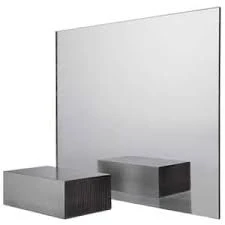

The Artistic Influence of Wave Pattern Glass Blocks
In recent years, architectural design has seen a significant shift toward incorporating innovative materials that combine functionality with aesthetic appeal. One such element that has gained immense popularity is the use of wave pattern glass blocks. These unique glass fixtures blend light, form, and texture, creating vibrant, dynamic spaces that captivate the eye and enhance the ambiance.
The Aesthetic Appeal of Wave Pattern Glass Blocks
Wave pattern glass blocks are characterized by their undulating surface, which refracts light in varying degrees, creating an enchanting visual experience. This curvature not only adds aesthetic depth to walls but also enhances the play of light and shadow within a space. The waves on the glass surface mimic natural water movements, evoking a sense of calmness and tranquility reminiscent of the ocean's rhythmic waves. Such visual dynamics can brighten up dull environments, making them more inviting and inspiring.
Incorporating wave pattern glass blocks into architectural designs allows for endless creative possibilities. They can be used effectively in various settings, from residential homes to commercial buildings, to create focal points or to subtly illuminate spaces without the need for additional lighting. Their ability to transmit and diffuse natural light while maintaining privacy makes them ideal for bathrooms, conference rooms, and even storefronts.
Practical Benefits of Wave Pattern Glass Blocks
Apart from their aesthetic advantages, wave pattern glass blocks offer a range of practical benefits. First and foremost, they provide excellent insulation, contributing to energy efficiency in buildings. The air trapped within the blocks acts as a barrier, reducing heat loss in winter and keeping interiors cooler during the summer months.
Moreover, these glass blocks are often made from durable materials, making them resistant to various environmental factors. They are less prone to breakage compared to traditional glass, ensuring safety while maintaining their beauty. This resilience makes them an appealing choice for high-traffic areas and public spaces, where durability is essential.

Versatility in Design Applications
Designers and architects appreciate the versatility of wave pattern glass blocks. They can be easily integrated into various architectural styles, from contemporary to traditional designs. In modern homes, these blocks can be used as feature walls, creating a striking contrast with minimalist decor. In commercial spaces, they can be utilized as partitions, providing a stylish solution that can be both functional and visually appealing.
Additionally, wave pattern glass blocks can be combined with other materials to create unique design concepts. For instance, pairing them with wood or metal elements can result in a balanced aesthetic, where the organic texture of wood interacts beautifully with the smooth, reflective surface of the glass. Lighting fixtures can also be installed behind or within the blocks to enhance their visual impact, turning them into luminous art pieces.
Environmental Considerations and Sustainability
As the architectural world becomes increasingly aware of environmental issues, the use of sustainable materials is more critical than ever. Many manufacturers now produce wave pattern glass blocks using eco-friendly processes. These blocks can often be recycled, aligning with the principles of sustainability. By choosing responsibly sourced and manufactured materials, architects can help reduce the carbon footprint of their projects while promoting a culture of sustainability.
Conclusion
Wave pattern glass blocks represent a harmonious blend of form, function, and artistry. Their unique design not only enhances the visual appeal of spaces but also contributes to energy efficiency and durability. As these blocks continue to gain popularity in architectural design, they offer architects and designers a versatile tool for creating innovative and environmentally friendly spaces. Whether used in homes, offices, or public buildings, wave pattern glass blocks have the potential to transform ordinary structures into extraordinary works of art, inspiring a deeper connection to the environment and the beauty of design. As we embrace these futuristic materials, the possibilities become limitless, encouraging a new era in architectural creativity and expression.